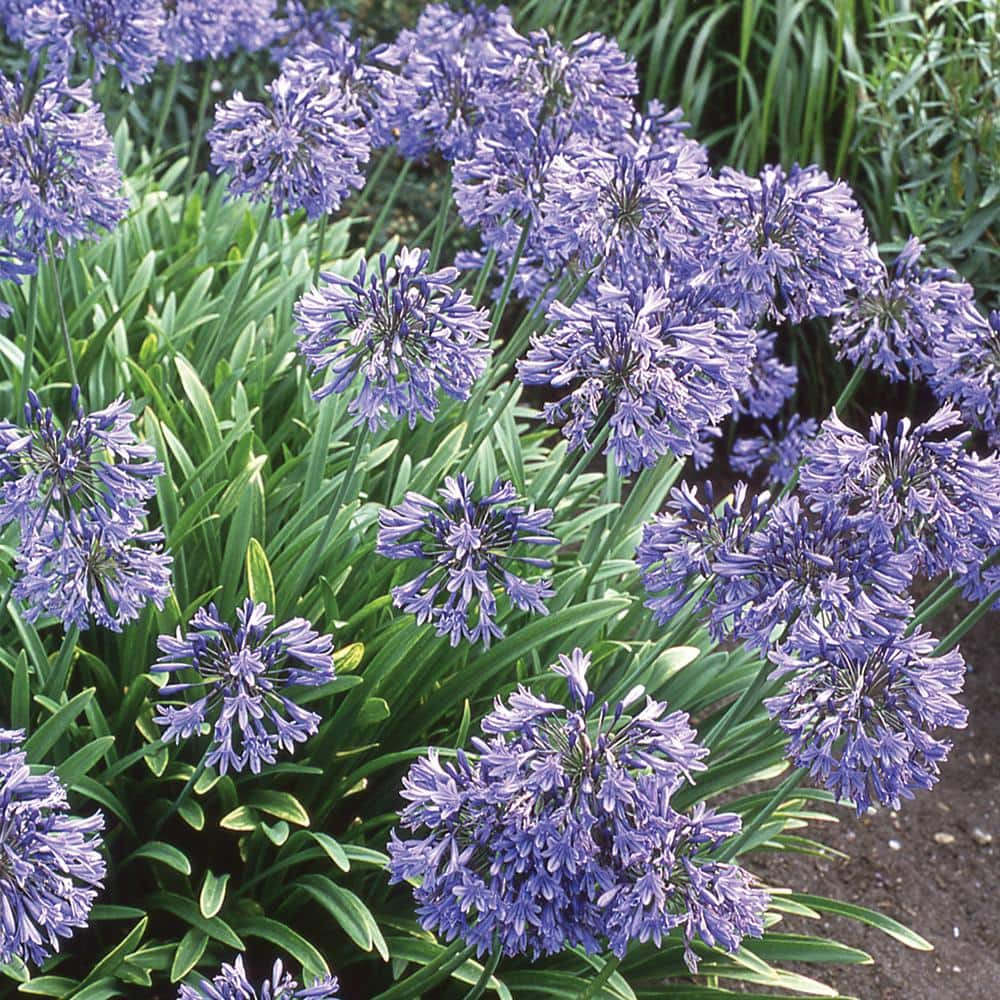Usual Agapanthus Troubles and Just How to Fix Them
Usual Agapanthus Troubles and Just How to Fix Them
Blog Article
Grasping the Art of Agapanthus Care: Necessary Steps for Healthy And Balanced Growth and Dynamic Blooms
In the world of gardening, the farming of agapanthus stands as a satisfying endeavor for those that look for to nurture these sophisticated flowering plants. From picking the right variety to mastering pruning techniques, the trip in the direction of growing growing agapanthus plants is multifaceted and holds the key to opening the full capacity of these botanical gems.

Choosing the Right Agapanthus Selection

When picking the appropriate Agapanthus selection for your garden, consider elements such as environment viability, bloom shade, and development behavior. Agapanthus, frequently known as Lily of the Nile or African lily, is available in a range of shades ranging from tones of blue and purple to white. Select a bloom shade that matches your existing garden scheme to create a harmonious landscape. Furthermore, consider the climate in your area to make certain the Agapanthus range you choose can flourish in your certain conditions. Some ranges are more forgiving of cool temperatures, while others prefer warmer environments. Understanding the development habit of various Agapanthus selections is crucial for appropriate positioning within your yard. Some varieties have a clumping development practice, perfect for borders or containers, while others have an even more dispersing nature, suitable for ground cover or mass growings. By carefully reviewing these elements, you can pick the excellent Agapanthus selection to improve the appeal of your garden.
Ideal Planting Conditions
Thinking about the optimum environmental demands is necessary for successful Agapanthus cultivation. Agapanthus plants are delicate to chilly temperature levels and ought to be protected from frost during winter months.
To ensure healthy and balanced growth and vivid blooms, plant Agapanthus bulbs at a deepness of about 2-4 inches and area them 8-12 inches apart. Mulching around the base of the plants aids maintain moisture and reduces weed development.
Watering and Feeding Tips
Keeping correct moisture degrees and supplying essential nutrients are crucial aspects in the care routine for Agapanthus plants. When it involves sprinkling Agapanthus, it is important to strike an equilibrium. These plants favor consistently wet soil yet are susceptible to root rot if overwatered. Throughout the expanding season, water deeply as soon as a week, ensuring the soil is well-draining to avoid waterlogging. In hotter environments or during periods of dry spell, even more constant watering might be essential to keep the dirt uniformly damp. However, minimize watering in the winter months to stop water logged conditions.
Fertilizing Agapanthus is important for promoting healthy development and prolific blossoms. Use a well balanced fertilizer, such as a 10-10-10 formula, in the early spring as new development emerges. By following these watering and fertilizing tips, you can guarantee your Agapanthus plants flourish and generate lively, lasting flowers.
Pruning Strategies for Agapanthus
Trimming Agapanthus plants at the proper times and with proper methods is vital for preserving their wellness and promoting optimum development and blooming. The optimal time to trim Agapanthus is in late wintertime or very early spring before new growth emerges. Start by eliminating any type of dead or yellowing leaves near the base of the plant. Cut them as short as possible without damaging the emerging shoots.
Deadheading spent blossoms can additionally reroute the plant's power right into creating more blooms rather than establishing seeds. If you desire to collect seeds for breeding, leave some blossoms to dry and mature on the plant.
Remember to make use of tidy, sharp tools to make exact cuts and lower the risk of introducing conditions. Agapanthus. Routine pruning will certainly aid maintain your Agapanthus looking healthy and cool while making sure an abundant display of beautiful blooms
Dealing With Typical Parasites and Diseases
After making sure proper trimming methods for Agapanthus, it is essential to address usual bugs and illness that can impact the health and wellness and vigor of these plants. One typical insect that try this website affects Agapanthus is the Agapanthus gall midget.
Additionally, Agapanthus plants can experience from root rot if they are planted in poorly draining soil. By being attentive and taking punctual activity versus diseases and pests, you can help your Agapanthus plants flourish and create vivid flowers. Agapanthus.

Verdict
In verdict, grasping the art of agapanthus treatment includes picking the appropriate selection, supplying perfect planting conditions, correct watering and feeding, proper pruning techniques, and addressing usual pests and conditions. By adhering to these necessary steps, you can ensure healthy and balanced growth and dynamic blooms for your agapanthus plants. Bear in mind to frequently monitor and keep your plants to promote their total well-being and durability.
To guarantee healthy and balanced growth and vibrant blooms, plant Agapanthus light bulbs at a depth of about 2-4 inches and space them 8-12 inches apart. By following these watering and feeding suggestions, you can guarantee your Agapanthus plants grow and create vivid, lasting blossoms.
One usual parasite that impacts Agapanthus is the Agapanthus gall midget. Furthermore, Agapanthus visit their website plants can endure from root rot if they are grown in inadequately draining about his pipes dirt. By complying with these vital steps, you can make certain healthy growth and dynamic blooms for your agapanthus plants.
Report this page